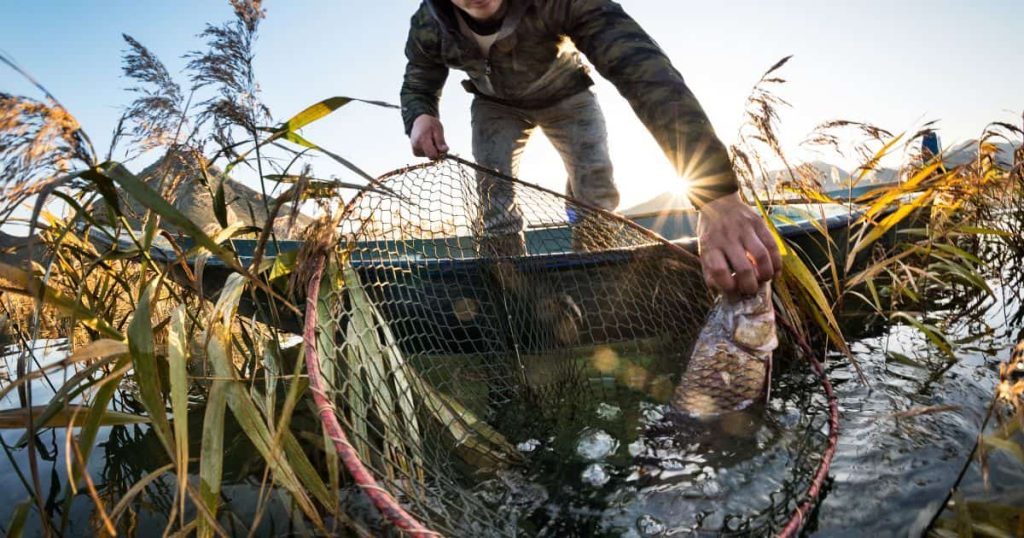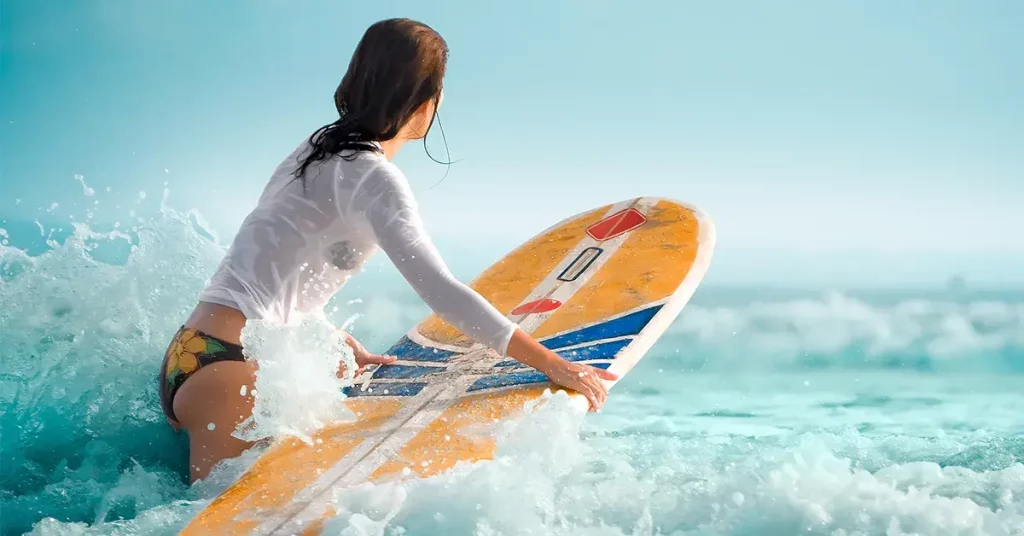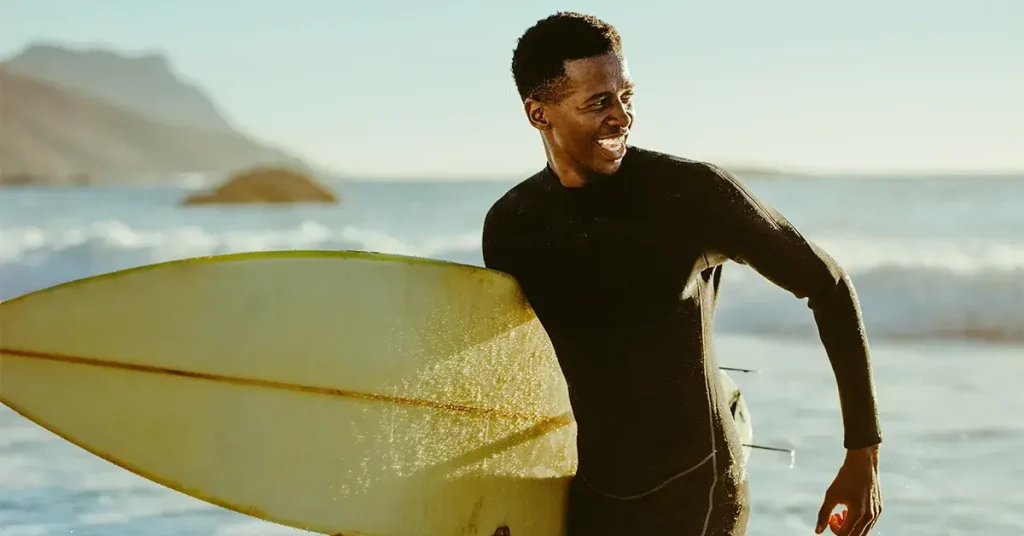Though the common carp was once considered difficult to catch, carp fishing has recently gained popularity in the angling community. This species provides anglers an exciting challenge with its reputation for being a rough fish and putting up a fight, making the catch all the more rewarding!
Whether you’re a beginner at fishing or an experienced angler looking to expand your horizons, we have you covered. Below, we have compiled a comprehensive guide along with tips and tricks to help you learn how to catch carp in no time!
Scouting for Carp Waters
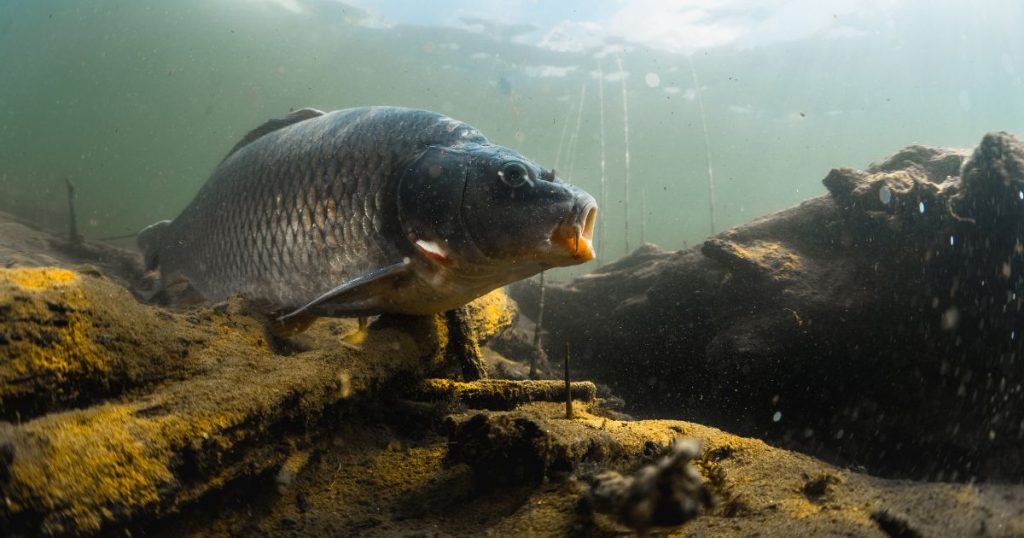
Carp is a tough species that can survive in many aquatic conditions. They can survive in varying oxygen levels, pollutants, and even stagnant waters. However, a carp angler needs to know where exactly to set camp.
According to the Department of Primary Industries, carp is a freshwater fish usually found in still or slowly flowing shallow water, especially in areas where there’s abundant aquatic vegetation.
The carp is an easily spooked fish that prefers muddy water with thick vegetation that can provide cover over clear water.
For a carp fisherman, it is best to look for muddy and shallow, warm water. The best locations for carp fishing are shorelines, river banks, and ponds.
They can be spotted by observing disturbances in mud patterns in bodies of water or by keeping an ear out for the splash these creatures make.
Keeping track of their food source is also an excellent way of finding carp. Look for areas abundant in shrimp, insect larvae, and dense aquatic vegetation. Their feeding zone is usually located between patches of vegetation, like weeds.
Best Time to Fish for Carp
It’s essential to learn the habits of this fish before learning how to catch carp. Carp are commonly active either early in the morning or late evening. Naturally shy, these larger specimens prefer the cover of darkness while hunting for food, so it is best to go fishing for carp around dawn and dusk or at night.
However, during winter, it’s best to plan a fishing trip towards mid-day. The sun gradually warms the shallow water and the fish stray toward the surface, since they have a dislike for cold water.
Scout the location before the ideal time to gain a sense of fishes’ movement and patterns before you’re ready to practice what you’ve learned about how to catch carp. They can be found year-round, but their metabolism slows during winters, meaning they don’t come to the surface as often.
Choosing the Right Equipment
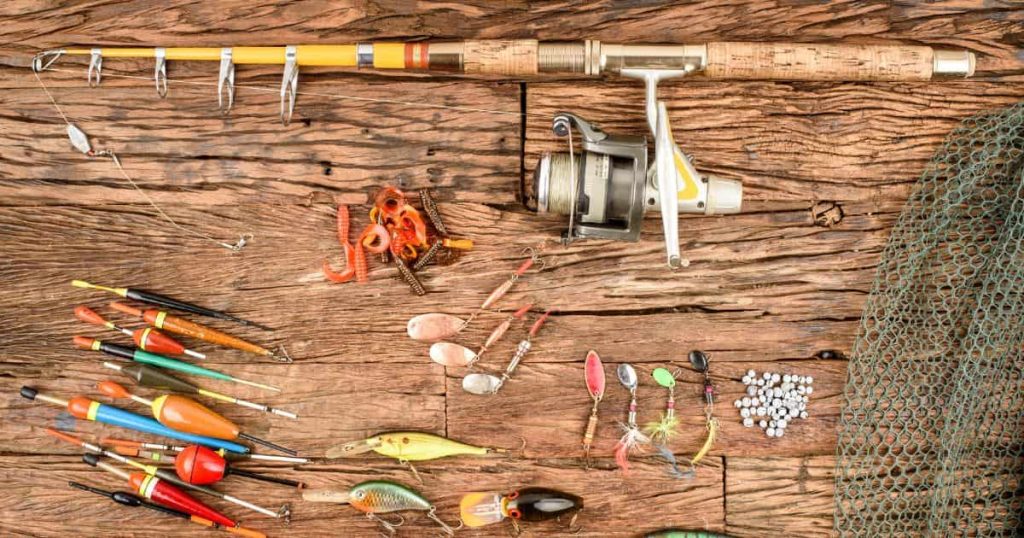
When learning how to catch carp, it’s important to remember they’re larger fish known for putting up a fight, which means it can take a considerable amount of physical strength to reel them in.
The common carp can weigh anywhere from 4 – 33 lbs, and grass carp weigh 55 lbs. on average and can grow up to 99 lbs. Their size, coupled with the difficulty of reeling them, means anglers need to select their equipment accordingly.
Rods
Carp can be baited and hooked from the shore. When selecting your fishing rod, it’s important to keep in mind ordinary graphite rods can easily break under a carp’s heavy weight. It’s preferable to use a stronger rod made of carbon fiber or a composite rod with flexibility for carp fishing.
The specifications of your rod will depend on the size of the carp you’re fishing for. While large rods are sometimes a hindrance, it’s best to use them while fishing for carp. The ideal rod should range from 4 – 6 feet for short-distance casting, and 10 – 13 feet for long-distance shore-line casting. The rod should have a 3-pound test curve and have medium action.
Kids and beginners can start with a shorter rod for better control, whereas more experienced anglers are advised to use a longer rod for the best results.
Important tip: It’s essential to keep your rod very still, as carps are naturally paranoid fish who will spook at the slightest unusual movement of your rod.
Explore a few rod and reel combinations to find the one best suited to carp fishing.
Bait
Preparing the bait for carp is an important step in learning how to catch carp. Depending on how you rig the bait, your chances of luring in one of these creatures will increase.
There’s no need to go out and buy fancy bait, when the job can be done with sweet corn or pieces of bread crust from your very own kitchen! If these don’t work, for bigger fish, you can always use hard-boiled boilies from any fishing store.
Baits differ for freshwater and saltwater fishing, so it’s important to keep in mind ideal baits for both.
Preparing the Rig
Since carp are known to put up a fight, it’s important to prepare the rig accordingly. Don’t stress about getting new equipment – you can form a wonderfully functional rig from materials you already have!
You can place your bait directly on the hook or place it on the hair and tie a hair rig, which will increase your chances of catching the fish, since it floats independently from the bait.
It’s best to use an extremely sharp hook but avoid using a shiny hook, since the glare may scare away the carp.
How to Catch Carp
As mentioned before, due to its heavy weight and stubborn nature, carp is one of the most challenging fish to catch, unlike other freshwater fish like trout. Therefore, it’s important to be familiar with the basics of how to catch carp before heading out.
The first step to catching fish is to scout the area and observe the patterns of the species, as mentioned above. The next step is setting up the ideal rig.
After setting up the rig, it would be ideal to chum the water, if that is legal in your area. Throw a small handful of your bait into the water and wait. This will ensure the carp isn’t suspicious of the bait and is drawn toward it. Make sure not to use a lot, or the carp will no longer feel hungry enough to latch onto your bait.
Chumming the water and the prebaiting process will also give you an idea of whether the fish will latch onto your bait or not.
While the fundamental principle is the same, the technique for fishing carp varies slightly from a pond to a lake and a river. We have broken down each into an easy-to-follow guide with additional tips.
How to Catch Carp in a River
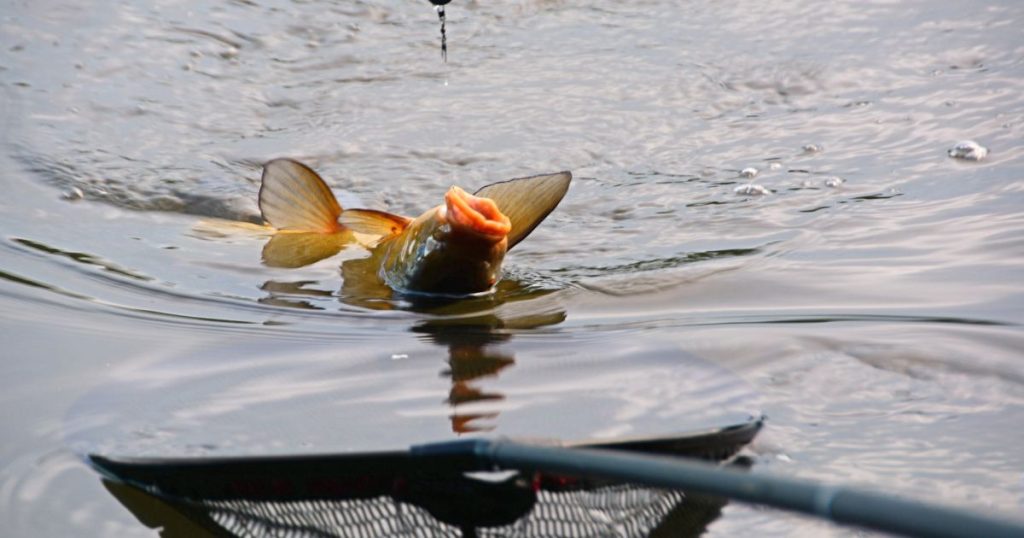
Rivers tend to be faster-flowing with stronger currents, making it even more challenging to reel in a large beast like a carp. It’s important to use the right equipment and have a good amount of strength when fishing for carp in a river.
A wild carp in a river can swim several miles a day. Locating river carp is harder than locating carp in ponds or lakes since they move with the current. Looking under a bridge, a fallen tree, or similar structures is a good way to begin.
Carp expend more energy swimming in the river, so they are more likely to be found in areas where they have access to a readily available food source. They also tend to be more suspicious of hooks since they haven’t likely seen any before, so use dull ones that blend in underwater.
In rivers, look for areas that provide cover (like vegetation) and a food source. Carp usually prefer the outsides of bends, merging currents, and drop-offs, since these places bring a regular deposit of fresh food.
Another trick is to remember carp aren’t solitary animals and prefer to move in shoals. Look out for movements of these.
Equipment
In terms of equipment for learning how to catch carp in a river, expect your fishing line to get tangled in vegetation and other obstacles found in a river. It’s only natural – practice is the best way to work around it.
Use a larger rod, preferably 12 feet, since you’ll be casting from a shore. Use a lighter lead since the splash from a heavy one might scare away your fish, along with hooks and reels or larger sizes, since river carp tend to be bigger.
A hair rig is an ideal choice for a carp fisherman, since these are easy to set, especially for a river setting.
Season and Time
Carp can be found year-round. Since rivers warm up slower than lakes and ponds, winter carp can be found here longer: however, they are less active, since their metabolism is slower and they venture out to eat less.
It’s recommended for beginner anglers to try river carp fishing in warmer months when the fish are more active and more likely to stray toward the surface for food.
Don’t hesitate to fish for carp at night! The fish is far more likely to be active in the cover of the dark.
How to Catch Carp in a Pond
It’s easier to catch a carp in a pond than a river since the area is smaller: it’s easier to observe their movements and patterns in the mud. It’s also easier to spot areas of crowded or dense vegetation where they’re more likely to hide.
If possible, mildly chum the area before throwing in the bait to increase your chances of a catch. You can use any bait you want for pond carp, especially readily-available options, like corn or bread.
Also, remember to cast ahead when fishing in a pond since carp are very easily spooked. They will end up swimming by your bait without getting suspicious.
Equipment
The equipment for pond carp fishing is pretty similar to other forms, and we at The Coastal Side will guide you through all the equipment you’ll need for carp fishing in a pond.
With that said, use an 8 – 10 foot rod and make sure to use a lighter lead, since the splash from a heavy one might scare away your fish. We also recommend using a size 6 or 8 hook and a medium size reel.
For pond fishing, it’s recommended to use a float. You’ll be able to see the float on the surface of the pond disappear underwater and quickly reel in your catch. The lighter the float, the more limited the casting distance. However, you don’t need to worry about this in pond fishing, since they aren’t very large to begin with.
Season and Time
When it comes to catching carp in ponds, it’s best during warmer months. Carp will be much more active, and you’ll have a higher chance of getting a catch.
Ideally, head to the pond you want to fish in when the light is low, around dawn or dusk.
How to Catch Carp in a Lake
Carp fishing in a lake is more similar to fishing in a river than in a pond. Therefore, follow the same guidelines mentioned above for how to catch carp in a river.
Also, look for areas with overhead tree branches, dense vegetation, and other forms of cover to locate your carp.
Conclusion
The challenge that comes with learning how to catch carp makes the experience of your fishing journey all the more rewarding. Just remember to follow the tips and tricks we’ve mentioned above to ensure smooth sailing during your next carp angling adventure.

